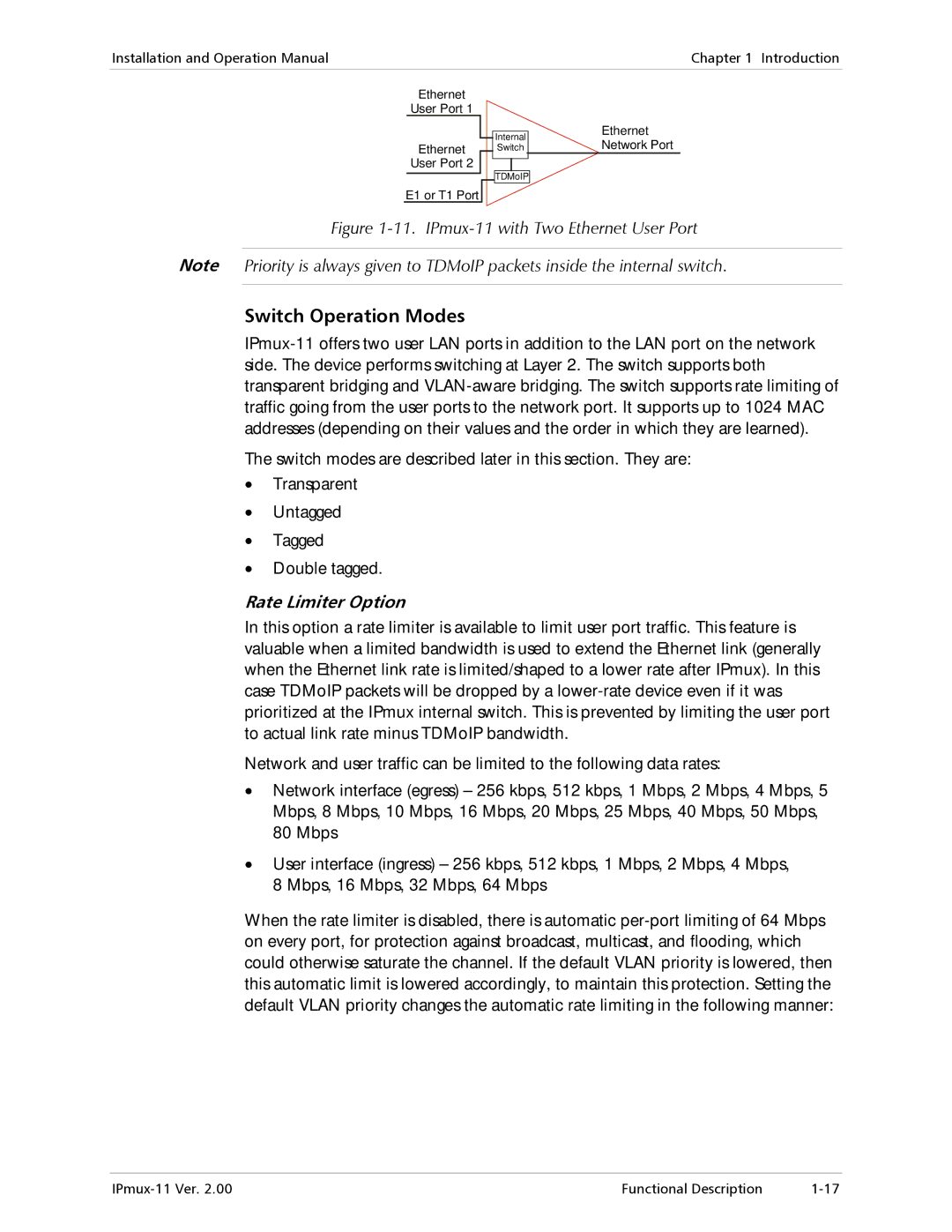
Installation and Operation Manual |
|
|
|
|
| Chapter 1 Introduction | |||
|
|
|
|
|
|
|
|
|
|
|
| Ethernet |
|
|
|
|
|
| |
|
| User Port 1 |
|
|
|
|
|
| |
|
|
|
|
|
|
|
| Ethernet | |
|
|
|
|
| Internal | ||||
|
|
|
|
| Network Port |
| |||
|
| Ethernet |
|
| Switch |
|
| ||
|
| User Port 2 |
|
|
|
|
|
|
|
|
|
|
|
| TDMoIP |
|
| ||
| E1 or T1 Port |
|
|
| |||||
|
|
|
|
|
|
|
| ||
Figure 1-11. IPmux-11 with Two Ethernet User Port
Note Priority is always given to TDMoIP packets inside the internal switch.
Switch Operation Modes
The switch modes are described later in this section. They are:
•Transparent
•Untagged
•Tagged
•Double tagged.
Rate Limiter Option
In this option a rate limiter is available to limit user port traffic. This feature is valuable when a limited bandwidth is used to extend the Ethernet link (generally when the Ethernet link rate is limited/shaped to a lower rate after IPmux). In this case TDMoIP packets will be dropped by a
Network and user traffic can be limited to the following data rates:
•Network interface (egress) – 256 kbps, 512 kbps, 1 Mbps, 2 Mbps, 4 Mbps, 5 Mbps, 8 Mbps, 10 Mbps, 16 Mbps, 20 Mbps, 25 Mbps, 40 Mbps, 50 Mbps, 80 Mbps
•User interface (ingress) – 256 kbps, 512 kbps, 1 Mbps, 2 Mbps, 4 Mbps, 8 Mbps, 16 Mbps, 32 Mbps, 64 Mbps
When the rate limiter is disabled, there is automatic
Functional Description |
